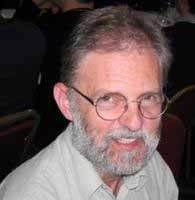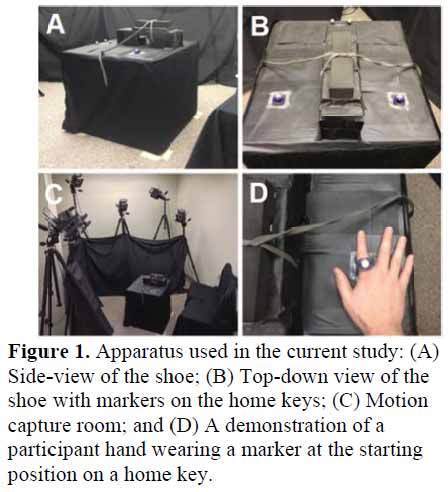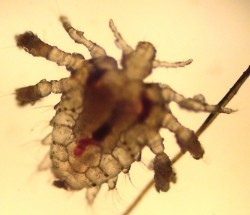Marc Abrahams's Blog, page 372
October 3, 2014
Philosophy? Tedious?
In his Presidential Address at the 53nd [sic] Annual Meeting of the Florida Philosophical Association, professor David McNaughton, of Florida State University, US, revealed that he had been inspired by a 2007 Guardian article by Jonathan Wolff (head of philosophy at University College London) which began: “Why is academic writing so boring?”
 Professor McNaughton refined this concept to ask : “Why Is So Much Philosophy So Tedious?” He drew attention to the undesirability of what he calls ‘Oxford Obscurantism’, ‘Soporific Style’, ‘Slapdashery’, and more. But naturally the narrative was not all negative naysaying – at the end of the address, the professor provided a plurality of positively proactive and pertinently practical propositions :
Professor McNaughton refined this concept to ask : “Why Is So Much Philosophy So Tedious?” He drew attention to the undesirability of what he calls ‘Oxford Obscurantism’, ‘Soporific Style’, ‘Slapdashery’, and more. But naturally the narrative was not all negative naysaying – at the end of the address, the professor provided a plurality of positively proactive and pertinently practical propositions :
“1.
The number of pages anyone is allowed to publish per year will be strictly limited (perhaps, for those familiar with the Philosophical Lexicon, to 0.01 of a Rescher). That will force people to decide what is the most important thing they wish to say, and what is the most succinct way of saying it. If this seems unduly harsh, we could allow the academic equivalent of ‘carbon-offsetting’ where those who insist on publishing buy pages from those who temperately desist.
2.
Graduate students who have completed all their course work with distinction may petition the department to allow them to proceed to a Dissertation provided: (a) that they can satisfy two medical practitioners that they are of sound mind, and (b) they can convince their committee that the world will be the loser by their silence.
3.
Readers will regard with suspicion, rather than admiration, books whose dust jackets proclaim that the writer is the author of numerous books and articles.
4.
There will be an annual prize, called the Edmund Gettier prize, awarded to any philosopher who meets two conditions: (a) she has only published one article, and (b) it has changed the discipline.”
Nevertheless, the professor concluded his address on a poignant bittersweet note: “It’ll never happen. But one can dream.”
INVITATION:
Improbable encourages readers to comment on this item by providing links to published papers, or academic presentations / videos &etc which, in their opinion, definitively illustrate the concept of philosophical tediousness.

A wide-ranging look at the number 3 in reality
The number 3 draws much of the focus in this study:
“The intriguing human preference for a ternary patterned reality,” Lionello Pogliani, Douglas J. Klein [pictured here], and Alexandra T. Balaban, Kragujevac Journal of Science, 27 (2005): 75-114. The authors, at Università della Calabria, Italy and Texas A&M University at Galveston, USA, explain:
“Number three is also rooted in many words, such as triangle, triumvirate, trierarch, triune, trefoil, trilobites, trilogies, trinity, triptych, tricolor (flags), triclinic (crystals), trilingual (persons or countries), ternary, thrice, trivium, tribulations, triumph, trivial, trifling, trial, tree. But let us start from the beginning. A number is an abstract entity used to describe quantity. The most familiar numbers are the natural numbers (0, 1, 2, 3, ….) used for counting…”
BONUS: A review of the book Numbers Zero, One, Two, and Three in Science and Humanities by Lionello Pogliani. The review includes this curious phrase:
“(for example, he again discusses the Bing Bang, and the fundamentality of the number one in many physical constants)”

October 2, 2014
Words That, Taken Together Possibly Mean Something
The scholarly journal called Social Text has again published a paper that may seem to be a jumble of big words but may, conceivably be full of deep, clear, important meaning.
The new study is:
“S’More Inequality — The Neoliberal Marshmallow and the Corporate Reform of Education,” Bethany Moreton [pictured here], Social Text, 2014, Volume 32, Number 3 120: 29-48. (Thanks to investigator Rose Fox for bringing this to our attention.) The author, at the University of Georgia, explains:
“Cognitive psychology—’the mind’s new science’ of the last several decades—has directed both popular and scholarly attention to the cultivation of individual willpower as a tool of personal maximization. The Stanford marshmallow experiment on delayed gratification among preschoolers serves as a widely recognized touchstone for this revivification of interest in the will. But the marshmallow test is more than a handy synecdoche for the cold new logic behind shrinking public services and the burgeoning apparatus of surveillance and accountability. It also shows how the sciences of the soul can be deployed to create the person they purport to describe, by willing political transformation. The individual agent of willpower—’executive function,’in the argot of the cognitive sciences—becomes both the means and the end of school privatization. This body of work offers a way to read savage social inequality and a bifurcated labor market as individual mental functions whose ideal type is corporate decision making; it also aids the transition to corporate control of education itself. Following this trope from the realm of cultural logic to public policy allows us to watch neoliberalism operating simultaneously as ideology and agenda and to recognize the consistent denial of reproductive labor that gives the lie to its pretensions.”
This same journal, Social Text, published a paper in 1996 that was honored with the that year’s Ig Nobel Prize for literature. That prize was awarded to the editors of the journal Social Text, for eagerly publishing research that they could not understand, that the author said was meaningless, and which claimed that reality does not exist. [REFERENCE: The paper was "Transgressing the Boundaries: Toward a Transformative Hermeneutics of Quantum Gravity," Alan Sokal, Social Text, Spring/Summer 1996, pp. 217-252.]

The tantalyzing fly
This 1919 animated cartoon by Max Fleisher shows many aspects of the motion of a fly. The Public Domain Review explains (basing its explanation on that in Wikipedia):
Max Fleischer (1883–1972) was a pioneer in the development of the animated cartoon and served as the head of Fleischer Studios. He brought such animated characters as Betty Boop, Koko the Clown, Popeye, and Superman to the movie screen and was responsible for a number of technological innovations. One of these was the Rotoscope, a technique in which animators trace over live-action film movement frame by frame. The technique was used to create his “Out of the Inkwell” series for Bray Studios.
BONUS: Ganson’s mechanical buzzing fly

October 1, 2014
“Tiny sea monkeys influence oceanic currents and waves”
This week’s Headline of the Week appears in the Delhi Daily News, on October 1, 2014:
Tiny sea monkeys influence oceanic currents and wavesTiny sea monkeys, which are actually a kind of shrimp, create giant ocean currents every evening after sunset.
Even though these sea monkeys are small in size they are given the name because their tail resembles a monkey’s tail.
Sea monkeys are also known as brine shrimp (Artemia salina) may contribute about a trillion watts, or a terawatt, of power to the surrounding ocean, churning the seas with the same power as the tides, the researchers said….
The article refers to the less colorfully worded study:
“Induced drift by a self-propelled swimmer at intermediate Reynolds numbers,” Janna C. Nawroth and John O. Dabiri, Physics of Fluids, (1994-present) 26, no. 9 (2014): 091108. The researchers are both at Caltech.
(Thanks to investigator Gary Dryfoos for bringing this to our attention.)

Shoelaces — the trials of cooperatively tying them with other people
Primary instructor Michael J. Crites and professor Jamie C. Gorman of the Human Factors Psychology dept. at Texas Tech University Lubbock, US, have investigated (experimentally) some of the difficulties of shoelace tying – with two hands, one hand, and with someone else’s hand. See: Learning to Tie Well with Others : Bimanual vs. Intermanual Coordination during Shoe-tying in Proceedings of the Human Factors and Ergonomics Society Annual Meeting September 2013 vol. 57 no. 1 1377-1381
“A shoe-tying paradigm was developed to examine mode effects and motor learning functions when people are asked to handle a familiar object (e.g., tying a shoe) using an unfamiliar coordination mode (e.g., tying a shoe with another person). Dyads first tied a shoe apparatus using their own two hands (“bimanual”) for 10 trials and then tied the shoe as a dyad, each person using one hand (“intermanual”) for 20 trials. Finally, participants tied the shoe bimanually for another 10 trials. Previous research has indicated that intermanual is faster than bimanual, but those experiments examined novel tasks performed by novices. For this familiar task, results revealed that participants were significantly slower in the intermanual mode compared to either set of bimanual trials, and participants were significantly faster in the second set of bimanual trials than the first. Unlike mode effects for novel tasks with novice participants, the intermanual mode was slowest, though intermanual performance may have enhanced subsequent bimanual performance. Previous research on motor learning suggests an exponential function describes acquisition of a novel skill, whereas a power law describes persistent motor learning. Analyses revealed that dyads exhibited a power law function over both the first set of bimanual trials and the intermanual trials. That finding suggests that participants were not learning a new coordination skill in the intermanual mode but may have transferred persistent, bimanual shoe-tying skill to the novel mode. Theoretical and practical implications of acquisition of a novel coordination mode for a familiar task are described. “
Also see, a previous paper: Are Two Hands (From Different People) Better Than One? Mode Effects and Differential Transfer Between Manual Coordination Modes in: Human Factors: The Journal of the Human Factors and Ergonomics Society August 2013 vol. 55 no. 4, pp. 815-829

September 30, 2014
The rise (to 85,000 feet) and fall of Walter White
Kayla Reed, writing for AV Club, gives some of the background to this video:
In the year since Breaking Bad bled off the airwaves, fans and stars alike have been reveling in its wake. One of the more creative homages comes courtesy of TV Tag, whose staff gathered a crew to send a Walter White bobblehead beyond the atmosphere and back again. The video below features a timelapse of the construction, launch, and travels of Mr. White and his vessel, whose six-hour journey took him 250 miles and reached a maximum altitude of 85,000 feet.
(Thanks to investigator Jane Hill for bringing this to our attention.)
BONUS: The chemistry of Breaking Bad, analyzed

Decline of pubic lice linked to removal of pubic hair, again
 Again researchers in the UK took the lead in pubic lice research. After Nicola Armstrong and Janet Wilson of the Department of Genitourinary Medicine, The General Infirmary at Leeds, posed the intriguing question ‘Did the Brazilian kill the pubic louse’ in 2006, many feared the rapid disappearance of the primary habitat – human pubic hair – would bring down the numbers of Pthirus pubis, or at least the number of cases of pubic lice infestations seen by medical professionals.
Again researchers in the UK took the lead in pubic lice research. After Nicola Armstrong and Janet Wilson of the Department of Genitourinary Medicine, The General Infirmary at Leeds, posed the intriguing question ‘Did the Brazilian kill the pubic louse’ in 2006, many feared the rapid disappearance of the primary habitat – human pubic hair – would bring down the numbers of Pthirus pubis, or at least the number of cases of pubic lice infestations seen by medical professionals.
Now a follow-up study, carried out by Shamik Dholakia, Jonathan Buckler, John Paul Jeans, Andrew Pillai, Natasha Eagles and Shruti Dholakia at the Milton Keynes General Hospital, Buckinghamshire, UK, based on 3850 returned questionnaires over a period of ten years, confirmed the decreasing incidence of pubic lice infestations and links this demise strongly to pubic hair removal practices. In their report ‘Pubic Lice: An Endangered Species?’ published recently in Sexually Transmitted Diseases 41(6): 388-391, they state, firmly:
Results: A significant and strong correlation between the falling incidence of pubic lice infections and increase in pubic hair removal was observed.
Conclusions: The increased incidence of hair removal may lead to atypical patterns of pubic lice infestations or its complete eradication as the natural habitat of this parasite is destroyed.
However, they still see a future for the species:
As culture and practice changes, we may see a changing atypical pattern of pubic lice infestations, as they try to colonize other habitats such as chest or eyebrow hair.
BONUS: A well preserved sample of Dutch specimens of Pthirus pubis, kept in the collection of the Natural History Museum Rotterdam, from 1949 when they had nothing to fear:
And here is some history: my own hunt for pubic lice specimens, in 2007.

September 29, 2014
Dung beetle Ig winner hailed in his home country
The University of Witwatersrand, Johannesburg issued this press report:
Two Witsies among World Class SAs26 September 2014
Wits University Professors Lee Berger and Marcus Byrne have been included in the 2014 edition of City Press’ 100 World Class South Africans that was released online onwww.citypress.co.za on Heritage Day, 24 September 2014.
“This is a collection of South Africans who have staked a claim to greatness not only on our shores, but abroad as well,” said City Press Editor-in-Chief, Ferial Haffajee. Launched in 2013, the series is a celebration of 100 living South Africans who have achieved world-class status through global recognition of their work in arts, sciences, business, fashion and design, civil society and sports. It is a way to acknowledge the sacrifices of the past, the achievements of the present and the goals of the future and is intended to evoke a feeling of national pride, Haffajee added….
For his quirky and exception work on dung beetles, Byrnehas been included in the Newsmakers & Shapeshifterscategory. He is a professor of zoology and entomology in the Wits School of Animals, Plants and Environmental Sciences. Last year he won the Ig Nobel Prize, awarded every year at Harvard University in recognition of illustrious (and often eccentric) people whose research first makes one laugh, then makes one think. Byrne and his team won for dressing up dung beetles in designer gear and putting them under the simulated night sky at the Joburg Planetarium to show how they use the Milky Way as a compass to orientate themselves.
Haffajee said this year’s edition is an inspiring picture of those who are “building a legacy for our land, harvesting the life lessons of the good and great among us. If we are to achieve our potential as a nation then we must strive to be a world-class nation.”
The 2013 Ig Nobel Prize jointly for biology and astronomy was awarded to Marie Dacke [SWEDEN, AUSTRALIA], Emily Baird [SWEDEN, AUSTRALIA, GERMANY], Marcus Byrne [SOUTH AFRICA, UK], Clarke Scholtz[SOUTH AFRICA], and Eric J. Warrant [SWEDEN, AUSTRALIA, GERMANY], for discovering that when dung beetles get lost, they can navigate their way home by looking at the Milky Way. [REFERENCE: "Dung Beetles Use the Milky Way for Orientation," Marie Dacke, Emily Baird, Marcus Byrne, Clarke H. Scholtz, Eric J. Warrant, Current Biology, epub January 24, 2013.]
(Thanks to investigator Gwinyai Masukume for bringing this to our attention.)

Rating tiddlywinks (statistically)
 Dr. Patrick Barrie, PhD, MRSC, CEng, MIChemE, Cchem, MA, BA, of the Department of Chemical Engineering and Biotechnology at Cambridge University, UK, presents A new sports ratings system: The tiddlywinks world ratings in the Journal of Applied Statistics Volume 30, Issue 4, 2003
Dr. Patrick Barrie, PhD, MRSC, CEng, MIChemE, Cchem, MA, BA, of the Department of Chemical Engineering and Biotechnology at Cambridge University, UK, presents A new sports ratings system: The tiddlywinks world ratings in the Journal of Applied Statistics Volume 30, Issue 4, 2003
“After each tournament, a ‘tournament rating’ is calculated for each player based on how many points the player achieved and the relative strength of partner(s) and opponent(s). Statistical analysis is then used to estimate the likely error in the calculated tournament rating. Both the tournament rating and its estimated error are used in the calculation of new ratings. The method has been applied to calculate tiddlywinks world ratings based on over 13 r 000 national tournament games in Britain and the USA going back to 1985.”
External links: The English Tiddlywinks Association (ETwA) website (based at Cambridge) is maintained by Dr. Barrie.
“ETwA’s objectives are to promote the game and coordinate winking activities in England and the rest of the United Kingdom. “
The association publishes a journal entitled ‘Winking World’, click pic to view:

Marc Abrahams's Blog
- Marc Abrahams's profile
- 14 followers




